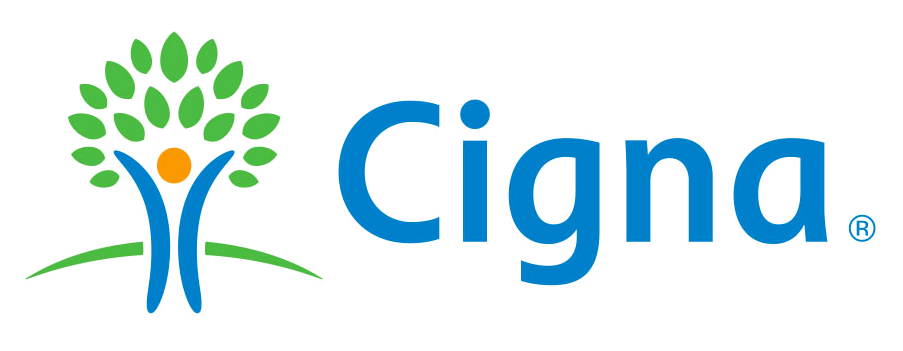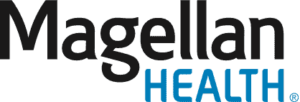Inpatient Rehab for Drugs and Alcohol

It takes courage to deal with drug and alcohol addiction along with mental health issues. It is a deeply personal decision that requires an approach that should be individualized. Each person’s recovery process is different, and there is no single solution that works for everyone. When you seek professional help in an Inpatient environment, you open the door to a plethora of options which you can customize to meet your unique needs.
Inpatient rehab is one of the best ways to tackle serious substance use issues. It provides a safe and organized place to focus on improving incrementally each day. It helps you remove the distractions and stresses of everyday life. It gives you a space that is dedicated to helping you rebuild your life after the harsh impacts of addiction.

What is Inpatient Rehab?
Inpatient Rehab is a live-in program. It’s a place where you, with the help of key staff members, can place your full focus and energy on recovering from drug and/or alcohol addiction. But for many, it’s not just about eliminating addictive substances from your body. It’s also about addressing the underlying reasons behind why you turn to those substances.
When you do this type of work, you want to make sure you’re in a safe and supportive place… a place where you can receive professional care every step of the way. Additionally, Inpatient rehab helps you focus on your recovery without the everyday distractions and triggers of daily life getting in the way.
In an inpatient rehab setting, you’ll find a daily routine that’s both structured and consistent. This framework is important for creating stability and accountability. This is especially true during the early stages of recovery.
Your daily schedule will likely include different activities. These activities will help you heal physically, emotionally, and mentally.
Daily Schedule
It is important to create stability and accountability. This is often vital in the early stages of recovery. Your day will likely be filled with different activities designed to help you heal physically, emotionally, and mentally.
- Therapy sessions
- Medical check-ups and detox support
- Meals
- Recreational activities
Group Therapy Sessions
Group therapy is a key part of treating addiction, and there’s a good reason for that. It provides many benefits that are often hard to get from one-on-one therapy.
One of the biggest pluses is the feeling of being connected. When you’re in a group, you don’t feel alone in your problems. You can talk about your experiences, learn from others, and see that you’re not the only one dealing with tough situations.
Some key benefits of group therapy include:
- Reducing feelings of boredom and isolation by connecting with others who understand what you’re going through.
- Sharing coping strategies that can help you handle challenging situations.
- Witnessing the progress and recovery of others can inspire and motivate you.
Individual Therapy Sessions
In inpatient rehab, individual therapy sessions help you explore personal challenges. You can set meaningful goals and develop tools to cope better. These sessions are a chance to focus entirely on you in a safe and confidential environment. Here’s what you can look forward to:
What to Expect
- Evidence-based Techniques: You should work on underlying issues. Use strategies that help people make lasting changes.
- Progress Tracking: Your therapist will check in on your progress and tweak your treatment plan as needed to keep you on track.
- Tailored Sessions
- Open-ended Questions
What You Can Work On
- Identifying triggers
- Replacing negative thoughts
- Developing coping skills
- Improving mental health
- Repairing relationships
Recreational Activities
Designers of rehabilitation programs understand that getting better isn’t just about healing your body or mind. It’s about helping all parts of you recover.
That’s why many addiction recovery centers offer various activities. These activities help keep you engaged and make you feel good during recovery. These activities aren’t just fun—they also support your recovery journey in meaningful ways.
Here are some activities you might come across:
- Exercise and Yoga (Strengthening your body and finding balance helps both physically and mentally. Yoga can also help calm your mind)
- Outdoor Adventures (Hiking, biking, or simply spending time in nature can lift your spirits and keep you active)
- Team-building Games (These help you build trust, communication, and connections with others. Plus, they’re a great way to stay engaged)
- Sports (Whether you enjoy playing basketball, volleyball, or tennis, sports can teach discipline, teamwork, and how to push yourself)
- Creative Arts (If you enjoy painting, drawing, or taking photos, creative activities let you express yourself. They also allow you to have fun)
- Music and Dance (Music can lift your spirits and keep you energized. Whether you are learning an instrument or dancing to your favorite songs, it has a special effect on your mood)
- Board Games or Puzzles (These activities can be a relaxing way to spend time with others while working on problem-solving skills and teamwork)
- Cooking or Baking Classes (Learn how to prepare healthy meals or experiment with new recipes. It’s a fun and productive way to spend time, and you’ll develop skills that can help support your long-term recovery)
Here’s Why People Choose Riverfront
Choose intimacy. Choose nature. Choose recovery that lasts.
Our Treatment Programs

- Riverfront views
- 24/7 medical care and supervision
- Television with streaming services
- Fireplace
- Full kitchen, stocked refrigerator and pantry

- Riverfront views
- Private and semi-private rooms
- Television with streaming services
- Fireplace
- Full kitchen, stocked refrigerator and pantry
- Full gym complete with yoga mats, Nike Strength Bench Press, Nike Strength Dumbells, Rogue Rower, Rogue Air Bike
- Fire Pits
- Pool Table
- Foosball Table
- Horseshoes
Here’s Why People Choose Riverfront
Choose intimacy. Choose nature. Choose recovery that lasts.
What is the Process of Inpatient Rehab?
Detox methods vary depending on the substance, how long you’ve been using it, and your overall health.
Cold Turkey Detox
“Cold turkey” is a term used to describe the act of quitting tobacco, alcohol, or drugs all at once instead of gradually cutting back. Rather than slowly reducing the amount you use, you simply stop immediately. This phrase comes from the goosebumps people get during withdrawal. These goosebumps look like the skin of a cold turkey in the fridge.
Many people choose to go cold turkey. This is a quick detox method.
They think it is easier to quit suddenly than to reduce slowly. They might think that by eliminating the substance completely, they’ll be less likely to give in to temptation and use it again. People often relapse because the discomfort becomes too overwhelming to handle alone.
Why it’s risky:
- Severe detox side effects like nausea, tremors, or seizures.
- Lack of medical support in case complications arise.
- Lack of cravings management strategies.
- Risk of detox complications, such as fetal distress for pregnant women, Grand mal or generalized tonic-clonic seizure during alcohol withdrawal, breathing problems, and gastrointestinal issues, among other health risks.
Tapering Detox
Tapering means gradually reducing how much of an addictive substance you take over time. When skilled medical professionals guide you, this approach can help your body adjust to sobriety. It can reduce intense withdrawal symptoms and make the process easier to handle.
What makes it effective:
- Reduces the intensity of withdrawal symptoms.
- Can be done under medical supervision for added safety.
Rapid Detox
In this method, withdrawal is sped up under medical supervision using specific medications to ease discomfort. While it may seem appealing to get through detox quickly, rapid detox is intense and may not suit everyone.
Key points to know:
- It’s done in a controlled medical setting.
- The intensity can pose risks, so it’s not always the best choice.
Medical Detox
This is widely regarded as the safest and most effective detox method. Medical detox provides professional supervision, medications to manage symptoms, and a structured environment to support you through the process.
Why it’s the gold standard:
- Ensures your safety with round-the-clock monitoring.
- Helps manage drug cravings and withdrawal with medication.
- Often includes support for both physical and mental health.
What are the Possible Side Effects of Drug Detox?
Detoxing from drugs is an essential step toward recovery, but it can come with some physical and emotional challenges. When you know what to expect, it can help you prepare and navigate the process more confidently. Here are some of the common side effects and what you can do to manage them.
Nausea and Vomiting
It’s not unusual to feel nauseous or even experience vomiting during detox, especially early on. Your body is adjusting to the absence of the substance it relied on, which can cause these uncomfortable reactions.
How to ease it:
- Stay hydrated to replenish fluids lost through vomiting.
- Small, bland meals can help settle your stomach.
Headaches and Dizziness
If you’re feeling a bit off during detox, you’re not alone. Headaches and dizziness can be common, especially in the early stages. Your body works hard to adjust to the absence of a substance it relies on. This change can cause uncomfortable feelings.
To help ease these symptoms:
- Hydrate Well. Make water and other healthy fluids your best friend.
- Make Rest a Priority: Take enough time to relax. If you’re struggling with insomnia, it might help to tweak your sleep routine.
- Watch for Triggers: Try to cut back on caffeine, alcohol, tobacco, drugs, salt, and cigarettes. These can make your symptoms worse.
- Move Slowly: Be careful with sudden movements, like bending down or getting up quickly, as they might increase feelings of dizziness.
- Ease Muscle Tension: Apply heat or ice to tense muscles in your neck and shoulders. A gentle massage on your temples, scalp, neck, or shoulders can really help too.
Insomnia and Fatigue
It’s completely normal for your sleep to be a little disrupted during detox. Both insomnia and fatigue are common as your body and mind try to get back on track. While it’s tough, remember that this phase is usually temporary.
To improve your rest:
- Try to go to bed and wake up at the same time every day, even on weekends. This helps keep your body’s internal clock in check.
- Make a calming bedtime routine. You can take a warm bath, read a good book, do gentle yoga, or listen to soothing music.
- Exercise regularly, but make sure to wrap up your workouts a few hours before you hit the hay.
- Limit your caffeine and nicotine intake. These can mess with your sleep and linger in your system longer than you think.
- Pick a light snack instead of a heavy meal or too many drinks before bed. This can help you avoid discomfort and sleep interruptions.
- Make Your Bedroom a Cozy Retreat: Keep your space quiet, dark, and comfortable. Investing in good bedding can really help create a peaceful atmosphere.
- Avoid screens like phones, tablets, TVs, and computers for one to two hours before sleep. The blue light they give off can trick your brain into thinking it’s still daytime.
Mood Swings and Irritability
This is widely regarded as the safest and most effective detox method. Medical detox provides professional supervision, medications to manage symptoms, and a structured environment to support you through the process.
Why it’s the gold standard:
- Ensures your safety with round-the-clock monitoring.
- Helps manage drug cravings and withdrawal with medication.
- Often includes support for both physical and mental health.
Facility Preview













